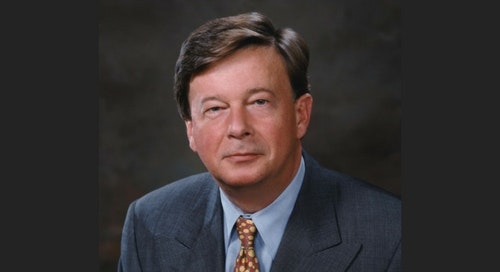The Advocate of Rare Disease Advocates: Remembering Henri Termeer


We were saddened to come to work Monday morning to discover that innovator, industry giant and Genzyme founder Henri Termeer had died. We had the pleasure of working with Termeer over the years as a speaker and sponsor of life science partnering activities. He is best known for creating Genzyme and turning that company from a small startup into a leader in bringing transformative therapies for rare diseases to patients.
Part of Termeer’s magic was the real connection he felt to his work. Speaking at Biotech Showcase™ as part of RARE In The Square event in San Francisco in January, Termeer spoke about the knock on the door one day in 2011 that changed his life. That knock was from Daniel de Boer, a 29-year-old engineer. Thanks to an introduction from a friend, de Boer met with Termeer and related to him that his young son had been diagnosed with cystic fibrosis, and Termeer committed to finding a way to help him and other patients with the disease. That meeting resulted in the formation of ProQR Therapeutics, a biotech company headquartered in Leiden, NL that is working to develop drugs to treat severe genetic disorders.
That story is important, Termeer told listeners, because it exemplifies how important patient advocacy is in bringing rare disease research to the clinic and, eventually, to patients. “It’s probably true that almost no rare disease work goes on in a company without patients having been connected to starting that effort,” Termer said. “Patients are absolutely the essential ingredient, and they are the biggest difference between what we have in the rare disease community versus what you have in the other, much broader-based disease areas that are driven in a very different way.” Termeer exuded unyielding passion and commitment as part of his inspirational character and leadership in the field. A highly accomplished man, Termeer will be remembered for many things, but it is his passion and dedication to innovation in rare diseases that is top of mind.
In his own words, from his panel remarks,
“What does it do for an organization to work in a space of this kind? What does it do when you become aware of the need that a patient has and that you are actually able to do something about it? That you can organize, to find a way to create a therapy? And what happens when you say ‘Yes, I’m going to do that, and I’m going to make that investment,’ and you become connected to that space, and you look the patient in the eye and the family in the eye and the physicians in the eye and you start? You become engaged in a way that you cannot disengage very easily as long as you have a shot at it. It’s a remarkable thing. We often feel in cell replacement therapy that you started a patient (on a therapy) and the patient benefitted, and you knew, and at the board level you made that decision, that for the rest of the life of this patient you would have to support this patient. There would be no way to withdraw the support. Now, this comes from recognizing that as an organization creating a therapy, you have a very special responsibility to do it right. And to do it in a way that is responsible. There are not many checks and balances when you have a thousand patients in the world. People don’t understand. You are the lifeline for these families, for these patients. Also for the physicians, and the nurses and everybody that takes care of these patients. You cannot let them down. So it’s a deep, unusual commitment as part of this thing, these are deep commitments, these are not casual commitments, these are very deep commitments. And overall, what I’ve found in our case, what created the bond between all the people engaged in it, is the sense of purpose. The sense of going after something. We became a very purpose-driven company. Purpose, people, process rather than strategy and systems. They are different environments. And we have a purpose, and you become committed to the purpose, you become connected to the patient and patient population in a much deeper way than you are when you are developing a pill in a box that goes to a pharmacy. And that’s really the difference.”
“Henri was a true inspiration and a pioneer in rare disease research,” said Anna Chrisman, Group Managing Director, EBD Group. “A serial biotech entrepreneur, he understood that patients must be at the forefront of transforming the understanding of rare diseases and of investment strategies in innovation.”